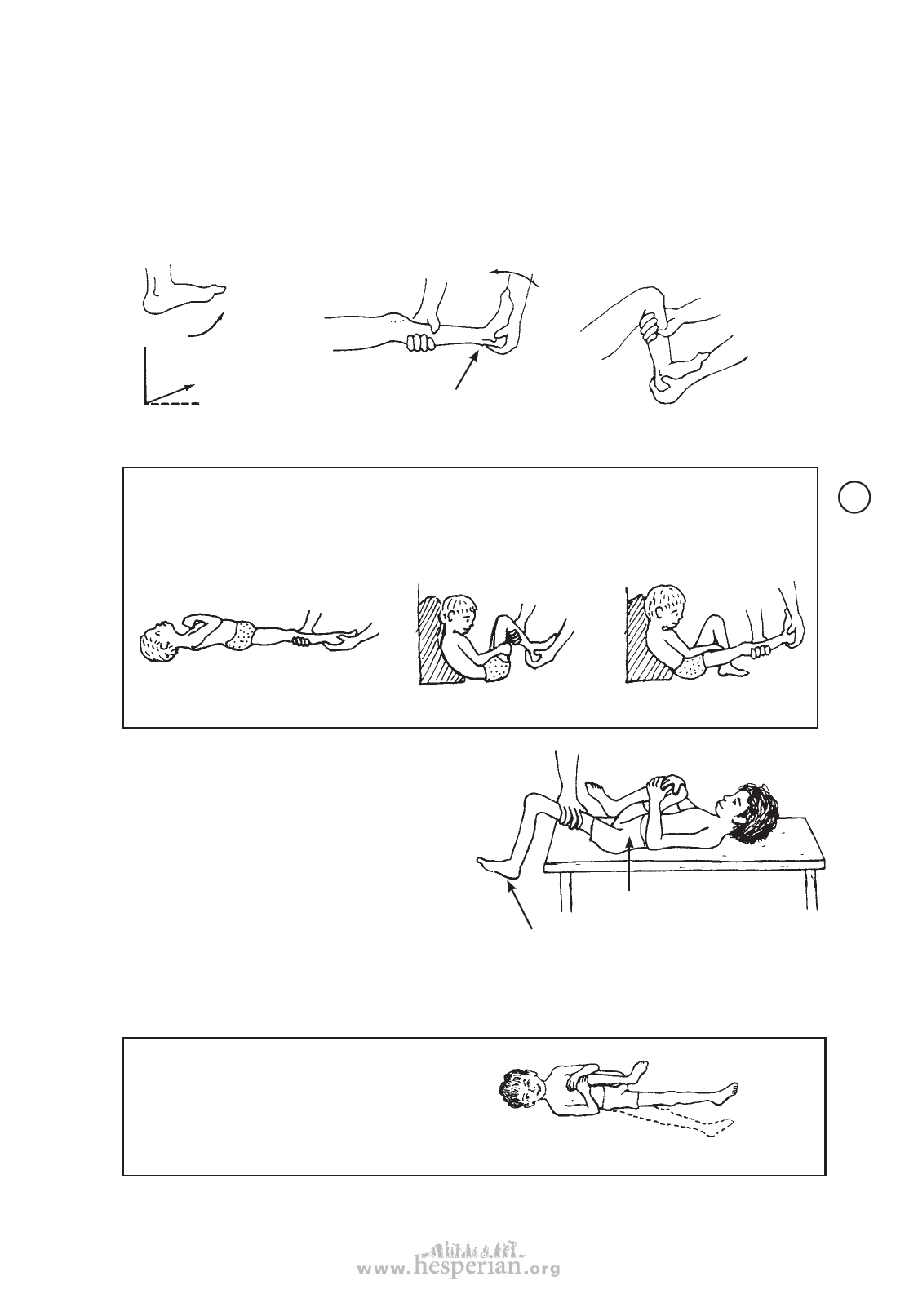
E X AMINATION
Precautions when testing for contractures
Testing range of motion of the ankles, knees, and hips is important for evaluating many
disabled children. We have already discussed knees. Here are a few precautions when
testing for contractures of ankles and hips.
29
Ankle
normal
upward
bend
Test the range of motion
with the knee as straight
as it will go.
With the knee bent, the foot will
usually bend up more. But for
walking, we need to know how far
it bends with the knee straight.
Feel the tight
heel cord here.
Note: To check ankle range of motion in a child with spasticity.
With his body and knee straight, it
may be hard to bend the ankle.
So first bend his neck, body, and
knees and then slowly bend up
the ankle.
Then slowly straighten his
knee while keeping the ankle
bent.
CP
Other precaustions for testing ankle range of motion are on p. 383.
Hip
To check how far the hip joint straightens,
have the child hold his other knee to his
chest, like this, so that his lower back is flat
against the table. If his thigh will not lower
to the table without the back lifting, he has a
bent-hip contracture. (See p. 79.)
Feel the tight cord here.
If the knee will not straighten, test him
with his leg over the edge of a table.
CAUTION The hips will often straighten
more at an angle to the body. So be sure
to lower the leg in a straight line with
the body, or you can miss contractures
that need to be corrected before the
child can walk.
RIGHT
WRONG
disabled village children